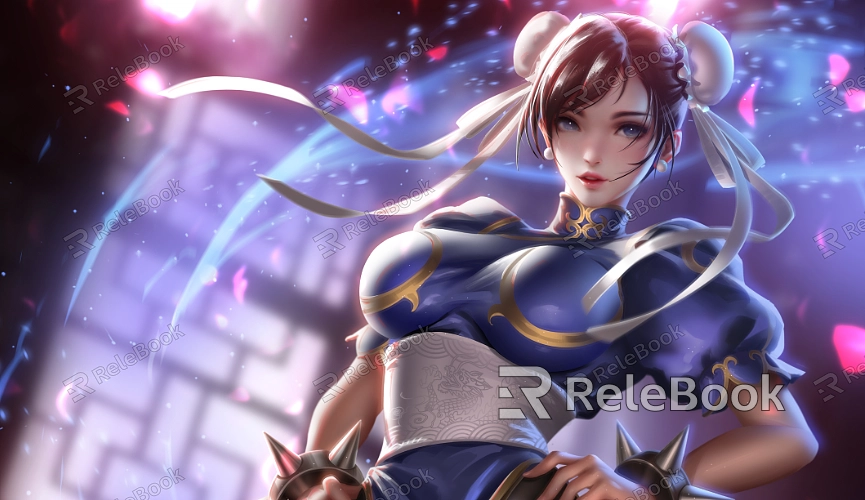How to Make 3D Game Textures
From architectural surfaces to character skins, and even natural landscapes like rocks and grass, the quality of textures plays a crucial role in enhancing the realism of a scene and the overall visual appeal of a game. Crafting high-quality 3D game textures is essential for elevating the immersion and expressiveness of games. Common scenarios for texture creation include game development, virtual reality projects, and architectural visualization. Popular tools for this task include Blender, 3ds Max, and Substance Painter. This article will explore the step-by-step process and techniques for making 3D game textures, equipping designers to work efficiently and effectively.

1. Define Texture Requirements and Goals
A clear understanding of project requirements lays the foundation for successful texture creation.
Analyze the Art Style
Different game styles demand varying texture approaches. For example, a realistic style requires highly detailed textures, while a cartoonish style emphasizes bold colors and simplified contours. Decide whether the texture needs to depict fine details like scratches, dirt, or reflective effects.
Plan Texture Resolution
Choose texture resolutions based on game engine performance requirements. For instance, character models often require high-resolution textures, whereas background models can use lower resolutions to conserve resources.
2. Prepare the Base Model and UV Mapping
Textures must fit seamlessly onto the 3D model, requiring accurate UV layouts.
Create or Import Models
Use Blender or 3ds Max to create base models, ensuring even polygon distribution. For complex objects in a game scene, low-poly modeling can optimize performance.
Unwrap UVs
Leverage the UV editing tools in your software to flatten the model’s surface into a 2D plane. Optimize the UV layout to avoid overlapping or stretching, ensuring the texture maps correctly onto the model.
3. Source High-Quality Texture Materials
The foundation of excellent textures lies in high-resolution material maps.
Download from Material Libraries
Platforms like Relebook provide a vast selection of texture materials, such as metal, wood, and fabric. Ensure you choose seamless textures to prevent visible tiling on the model’s surface.
Capture Custom Textures
Use a camera to photograph real-world surfaces, then refine them in Photoshop to create unique and high-quality textures.
4. Edit Textures with Painting Tools
Adding intricate details through painting can elevate the final outcome.
Refine Surface Details
Use Substance Painter to directly paint textures onto the model, such as adding scratches, dirt, or gradients.
Layer Materials
Divide materials into distinct layers, such as base color, normal maps, and roughness maps, allowing for precise post-editing adjustments.
5. Create Normal and Bump Maps
Normal and bump maps can simulate complex surface details without increasing polygon count.
Generate Normal Maps
Bake high-resolution models into normal maps using tools like Substance Designer. These maps simulate surface intricacies, such as the unevenness of bricks.
Adjust Bump Strength
Tweak the depth of bump maps to suit the material. For example, old wooden planks might benefit from more pronounced bump effects to enhance their natural appearance.

6. Optimize PBR Material Properties
Physically Based Rendering (PBR) materials realistically replicate how objects interact with light.
Set Material Parameters
Adjust PBR parameters such as reflectivity, metallicity, and roughness based on the object type. For instance, glass needs high reflectivity, while fabric requires low reflectivity and high roughness.
Test Lighting Effects
Add light sources in 3ds Max or Unity to observe how the texture reacts under various lighting conditions, and adjust the material properties accordingly.
7. Optimize Texture Performance
Optimizing textures ensures smooth gameplay without sacrificing visual quality.
Compress Texture Files
Use tools to compress texture files without significant quality loss. For example, switch from uncompressed TIFF files to optimized PNG formats.
Manage Levels of Detail (LOD)
Assign multiple texture levels for models at varying distances. Low-resolution textures can be used for distant objects to conserve GPU resources.
8. Test Textures in the Game Engine
After creating textures, testing them in the game engine ensures they perform as intended.
Import and Apply Materials
Load textures into Unity or Unreal Engine and bind them to the model materials. Check their appearance in the actual game environment.
Fix Problem Areas
Address issues like stretching or mismatched seams by revisiting UV mapping or editing the texture maps. For example, adjust seam transparency or correct tiling overlaps.
By following these steps, designers can systematically craft 3D game textures that are both realistic and optimized. From selecting materials to refining details and testing in a game engine, each stage requires careful planning and execution. If you're searching for premium 3D texture resources, such as textures, SketchUp models, or 3ds Max assets, Relebook is an excellent resource. Downloading textures and models from Relebook and integrating them into your workflow can significantly elevate the quality of your projects.

